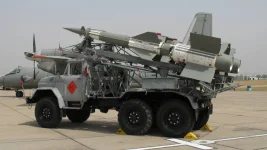- Views: 1K
- Replies: 7
The Indian Navy's planned acquisition of 15 MQ-9B Sea Guardian drones marks a significant step towards enhancing maritime surveillance capabilities in the Indian Ocean Region (IOR) while optimizing operational costs.
These advanced unmanned aerial vehicles (UAVs) are expected to complement the Navy's fleet of 12 P-8I Neptune Maritime Patrol Aircraft (MPA), which have been extensively deployed to monitor the IOR, particularly in response to the growing presence of the Chinese Navy.
While the MQ-9B carries a hefty price tag of around $100 million per unit, Navy officials familiar with the system emphasize its long-term cost-effectiveness. The P-8I aircraft, equipped with sophisticated sensors and anti-submarine warfare (ASW) capabilities, has been crucial for surveillance operations. However, the increased deployment necessitated by the growing presence of Chinese warships and submarines has driven up operational costs significantly.
The P-8I, based on the US Navy's P-8A, costs approximately $175 million per unit, with a life-cycle cost per flying hour estimated at around $42,300. This high operational cost makes sustained use of these aircraft for routine patrols financially challenging.
In contrast, the MQ-9B Sea Guardian, while costing $100 million per unit, boasts a significantly lower life-cycle cost per flying hour – roughly 1/6th that of the P-8I, translating to approximately $7,050 per flying hour. This substantial reduction in operational costs allows the Navy to achieve similar surveillance objectives at a fraction of the cost, making the MQ-9B a highly cost-efficient alternative for routine maritime patrols.
By utilizing MQ-9B Sea Guardians, the Indian Navy can significantly reduce expenses while maintaining comprehensive maritime domain awareness in the IOR. The UAVs will enable persistent surveillance without solely relying on the P-8I, freeing up the manned aircraft for more specialized missions such as ASW and intelligence gathering.
The MQ-9B's cost-effectiveness is particularly attractive given the increasing number of foreign naval vessels, especially from China, operating in the IOR. The UAVs can operate for extended periods without crew fatigue, and their lower operational costs allow for a consistent presence in the region, crucial for tracking both surface ships and submarines.
While the P-8I remains unmatched in its long-range ASW capabilities and multi-mission sensors, the MQ-9B offers operational flexibility crucial for modern naval operations. Equipped with advanced radar systems, electro-optical/infrared sensors, and other payloads, the Sea Guardian can perform a wide range of missions, from intelligence, surveillance, and reconnaissance (ISR) to search and rescue (SAR) operations.
Furthermore, the MQ-9B can be deployed in situations where utilizing a high-cost platform like the P-8I would be impractical or unnecessary. For routine patrols, the MQ-9B can provide real-time imagery and sensor data, identifying potential threats and relaying information back to naval command centers, ensuring continuous situational awareness without the high costs associated with manned flights.
Integrating MQ-9B Sea Guardians allows the Indian Navy to develop a more scalable and cost-effective maritime strategy. The UAVs can handle routine surveillance and reconnaissance missions, while the P-8I aircraft can be reserved for more critical operations requiring advanced ASW capabilities and long-range strike potential. This division of labor optimizes resource allocation, ensuring a consistent patrol presence in the vast Indian Ocean without straining the operational budget.
Given the expanding scope of India's naval responsibilities, this cost-effective solution is vital for ensuring the Indian Navy remains prepared to address both traditional and non-traditional threats in the IOR. The MQ-9B Sea Guardian promises to be a valuable asset in maintaining maritime security and upholding India's strategic interests in the region.



